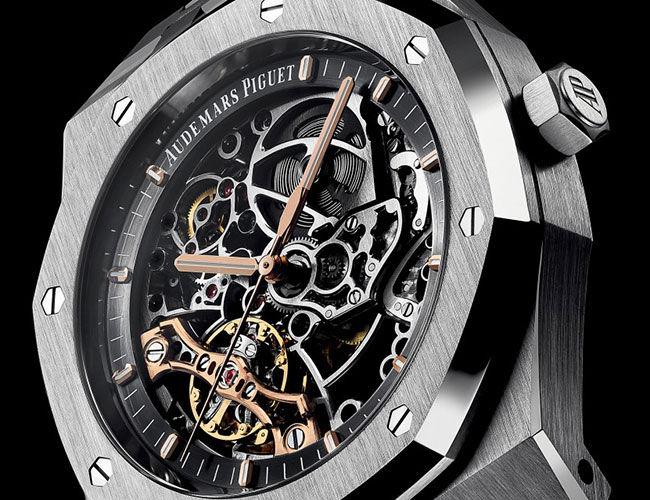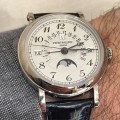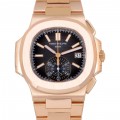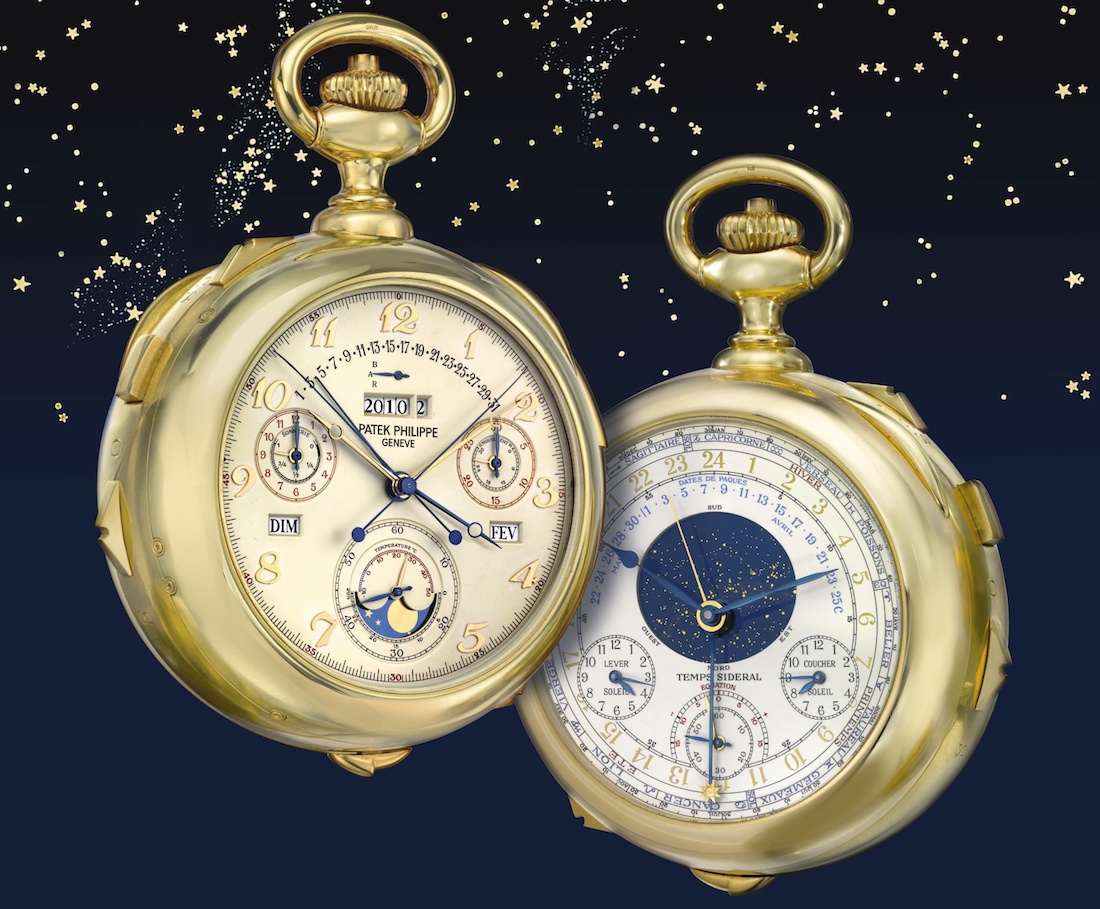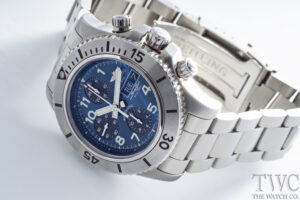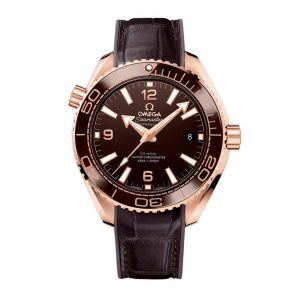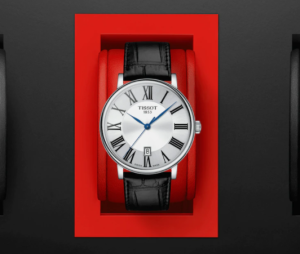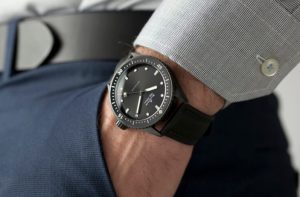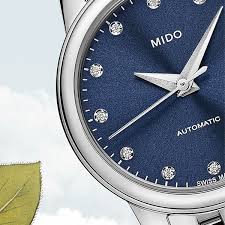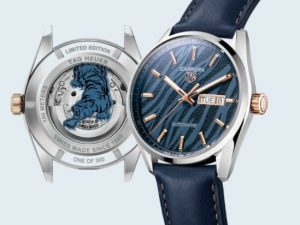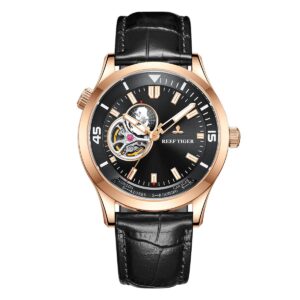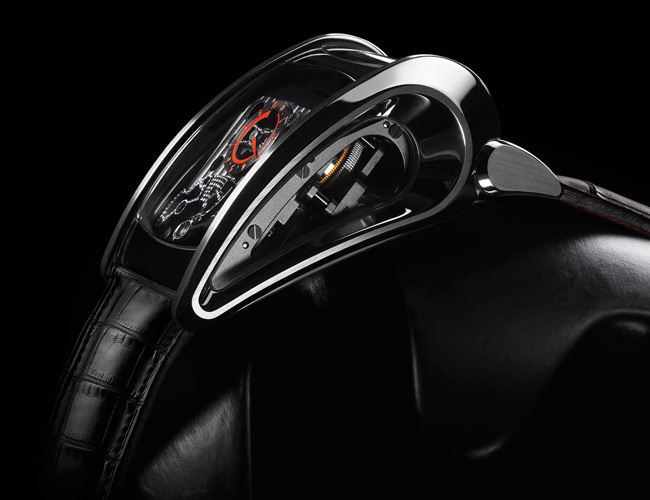
On any list of great Swiss watch companies will be melodic names of nineteenth-century watchmakers — Baume & Mercier, Breguet, Patek Philippe — and storied brands like IWC and Rolex. These are companies whose founders have long since gone on to the great workbench in the sky, but whose legacies are still used to great effect to sell timepieces. But one watchmaker with great tradition and legendary attention to detail is still alive and well: Michel Parmigiani.
Parmigiani came of age as a watchmaker at exactly the wrong time. The 1970s were dark days for the Swiss industry, with affordable Japanese quartz watches sending once-great brands into a tailspin. So, after apprenticing in Neuchâtel, Michel Parmigiani didn’t seek work making new watches. He specialized in restoring old ones — and he quickly made a name for himself. His meticulous work can be found in Patek Philippe’s museum and the Museum of Decorative Arts in Milan; his restoration of a Breguet “sympathetic” clock (a pocket watch that docks and synchronizes to a pendulum clock) was deemed an impossible feat by the auction house that sold it.
When, in 1996, Parmigiani’s employer, the Swiss Sandoz Family Foundation, offered him a chance to create new watches in the traditions he was so versed in restoring, he took it. Thus, Parmigiani Fleurier was born, 20 years ago this summer, producing small numbers of exquisitely decorated, highly complicated timepieces, such as the iconic Kalpa, the avant-garde Bugatti Super Sport and, just this year, the Tonda Chronor, the company’s first homegrown chronograph calibre. To celebrate his brand’s 20-year anniversary, Parmigiani made the rounds of retailers in the US and Canada, and I had the chance to sit down with him on a stopover in Minneapolis. Naturally, he arrived right on time.
More Watches 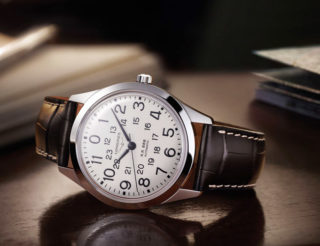 The 6 Watches We Want to Wear This Fall
The 6 Watches We Want to Wear This Fall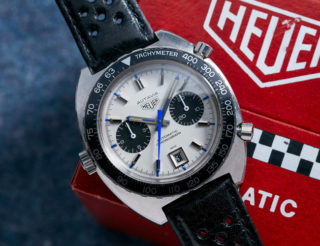 The Watch News You Missed This Week
The Watch News You Missed This Week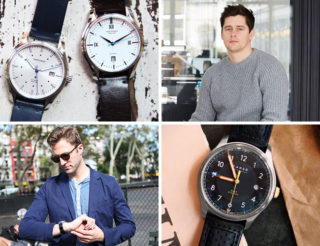 3 Young Companies Reinventing the Fashion Watch
3 Young Companies Reinventing the Fashion Watch
Q: You came of age during a difficult time for Swiss watchmaking. Is the watch industry in trouble again?
A: In the 1970s, watchmakers were considered outcasts, and it was a real adventure to start a business back then. The banks had given up on watchmaking so it was very complicated and pioneering to do it at that time. For most people, the game was over. But what most people forget is that traditionally, the watchmaking industry has gone through these big highs and big lows.
What’s happening now is what I consider a “rupture.” It’s a case of companies producing too many watches for the reality of the market. The groups are pushed by demands of their stockholders and that hurts the whole industry. We need to consider high-end watchmaking as an art form. The timepieces we are talking about are filled with emotion and unfortunately they’ve become more of a commodity and a number-driven business. That is the opposite of what I believe in.
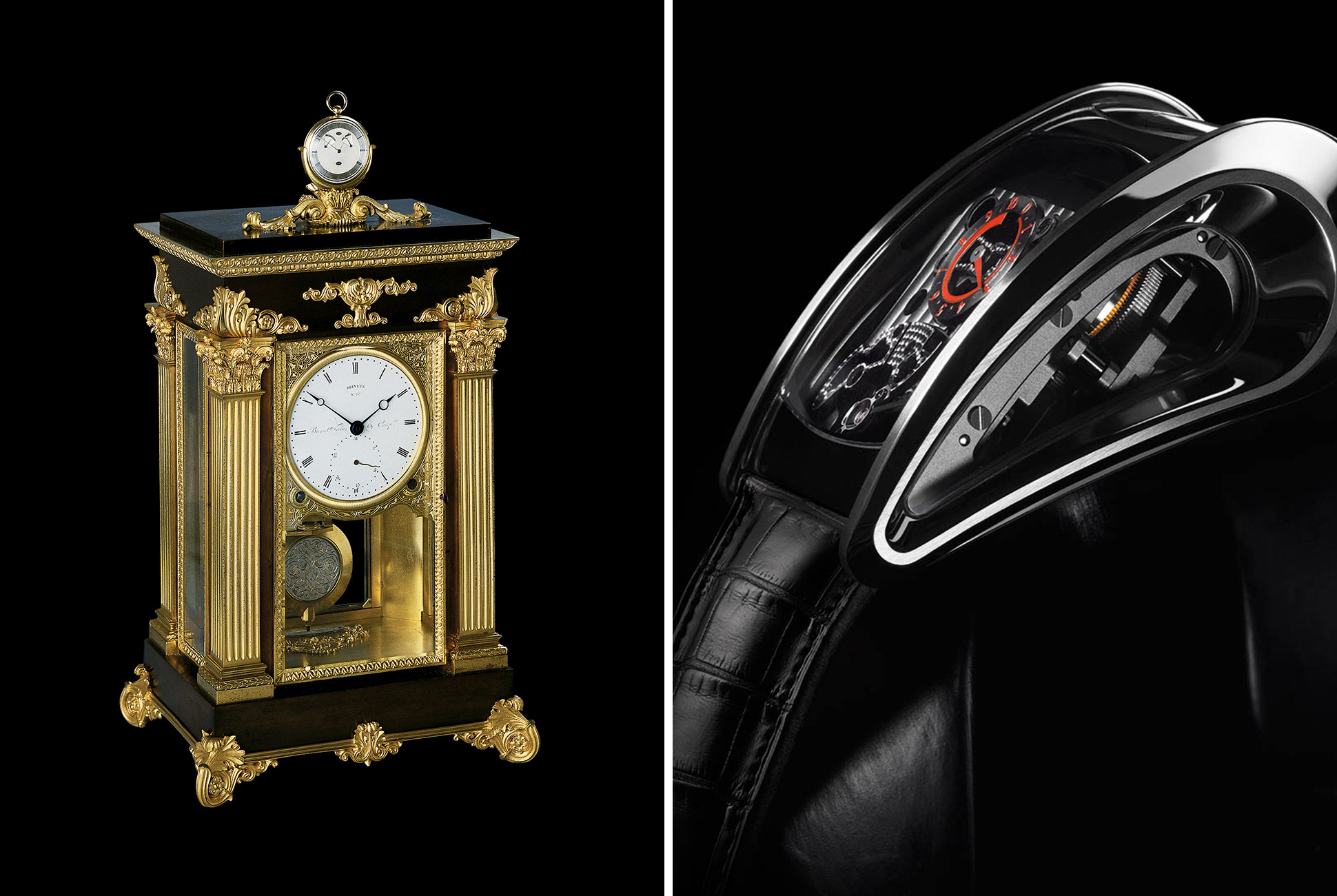
Two of Parmigiani’s most interesting (and contrasting) pieces: his restoration of a Breguet “sympathetic” clock (a pocket watch that docks and synchronizes to a pendulum clock) and the avant-garde piece created in collaboration with Bugatti.
Q: So will high-end brands like Parmigiani Fleurier be able to better weather the ups and downs than the brands making “commodity” mechanical watches?
A: Our mandate is to not make more numbers but to make better, more emotional, more personal timepieces. It’s where the parallel with the art world is apparent. When you do 15,000 timepieces a year, you simply cannot have the attention to detail as a brand like ours that makes less than 5,000. Without the compulsion to grow numbers, a smaller brand can therefore do very well because they go back to the roots of the business, making pieces of art for discerning customers.
Q: Parmigiani is often considered one of those rare “vertically integrated” watch companies. Can you explain the structure?
A: When Parmigiani Fleurier was started, we were looking for a group of companies that represented the best craftsmanship in Switzerland available. Within a decade, we put together a complete manufacture of a few companies, including Vaucher for the movements, LAB for the cases, even one for the wheels and screws. And we wanted to keep all these people in the same region (Fleurier) because people don’t move in Switzerland. If you are making wheels and screws, you stay where you are. All of these companies are part of the Group Parmigiani, though we don’t have “Parmigiani” on the front door of these companies for the simple reason that we also provide a lot of components to other companies. And for instance, Patek Philippe might not like to receive an invoice from Parmigiani Fleurier.
Q: Given the traditional nature of Parmigiani timepieces, how do you hope to appeal to a new generation of watch enthusiasts?
A: The wish is to help people understand what is truly special about a timepiece. Not so much what is on the outside as much as what’s on the inside. We’re looking for coherence, so that the aesthetics match the engineering. The technical aspect has to be as beautiful as the outside of a watch. A movement that is not well decorated doesn’t make sense. For example, this is a spring. [Parmigiani pulls out a notebook and pen and sketches a simple curved shape.] But so is this. [He sketches the same shape but with an elegant flourish at the tip.] This is the challenge of the watchmaker.
Q: It seems like some brands are getting very technical in movement development and material usage. Is there a danger of getting too esoteric?
A: With our heritage in restoration, there’s a danger of being perceived as merely focused on heritage, but Parmigiani Fleurier is one of the most advanced technological brands, with our work in surface treatments, and evidenced in a watch like the Senfine, which solves one of the biggest challenges in mechanical watchmaking, power reserve. [Ed. The Senfine is a concept watch that uses a high-frequency escapement with elastic components to achieve a 70-day power reserve.] We need to show that we are looking ahead to the future while still abiding by the classic codes of the industry.
Q: What other brands or watchmakers do you respect and admire?
A: For their tradition and steady policies over the years, Patek Philippe. Also Breguet, Vacheron, and Lange & Söhne. On the smaller side, Philippe Dufour, De Bethune. All of these have spent some time working with me. I’ve helped make some unique pieces for Breguet and they’ve managed to keep the unique history of the brand.
My main critique of many of these brands is that they’re making too many pieces. I understand that to pay for the marketing of your brand, you have to make more pieces, but by making more pieces, you’re affecting the capital of your brand. It’s a vicious circle.
